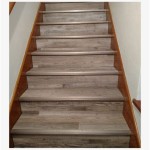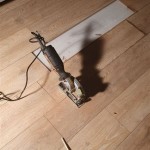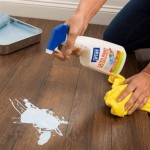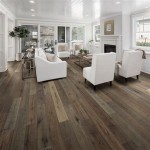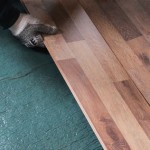A Guide To Ipe Hardwood Flooring Reviews
Ipe hardwood flooring, often referred to as Brazilian Walnut, stands out as a premium flooring option due to its exceptional durability, natural beauty, and resistance to the elements. This dense and exotic wood species is sourced primarily from South America and has garnered significant attention in the construction and design industries. Understanding the nuances and experiences associated with Ipe flooring requires a comprehensive look at its reviews, covering various aspects from installation to long-term performance.
Analyzing Ipe hardwood flooring reviews involves considering factors such as the wood's inherent characteristics, the quality of the milling and finishing processes, and the specific application environments. Potential buyers and industry professionals alike rely on these reviews to make informed decisions. This guide aims to provide a detailed overview of Ipe flooring, examining the key points raised in user reviews and expert assessments to present a balanced perspective on this popular flooring choice.
Understanding Ipe Hardwood Characteristics
Ipe's defining characteristic is its remarkable density and hardness. It consistently ranks among the hardest woods available, boasting a Janka hardness rating substantially higher than domestic hardwoods like oak or maple. This exceptional hardness contributes directly to its superior resistance to scratches, dents, and general wear and tear. User reviews frequently highlight the flooring's ability to withstand heavy foot traffic and maintain its aesthetic appeal over extended periods, even in high-use areas such as hallways or commercial spaces.
Beyond its hardness, Ipe is naturally resistant to decay, insects, and mold. This inherent resistance stems from the wood's high oil content and tight grain structure. Reviews often mention its suitability for both interior and exterior applications, including decks, patios, and even boat docks. The naturally occurring oils also contribute to Ipe's dimensional stability, meaning it is less prone to warping, cupping, or shrinking compared to other wood species. This stability is particularly important in environments with fluctuating humidity levels.
The aesthetic appeal of Ipe is also a significant factor in its popularity. The wood exhibits a rich, dark brown color with subtle variations and grain patterns, contributing to a sophisticated and elegant look. Some reviews praise the natural color variations, noting that they add character and depth to the flooring. Over time, Ipe will naturally weather to a silvery-gray patina if left untreated, a characteristic often appreciated in outdoor applications. Regular oiling can help maintain the original color and luster if desired. The wood's aesthetic versatility allows it to complement a wide range of design styles, from traditional to contemporary.
Key Installation Considerations and Challenges
Installation is a critical aspect of any flooring project, and Ipe hardwood is no exception. Due to its extreme hardness, Ipe requires specialized tools and techniques for successful installation. Reviews often underscore the importance of using carbide-tipped blades and pre-drilling holes for nails or screws to prevent splitting the wood. The density of Ipe also necessitates a more powerful fastening system compared to softer woods. Adhesives approved for hardwood flooring are often recommended, particularly when installing Ipe over concrete subfloors.
Professional installation is frequently advised due to the complexities involved. Reviews often cite the difficulty of working with Ipe for individuals without prior experience. The labor costs associated with Ipe flooring can be higher than those for other wood species, reflecting the increased time and effort required for proper installation. However, the long-term benefits of a professionally installed Ipe floor, including its enhanced durability and longevity, often outweigh the initial cost difference.
Another consideration is acclimatization. Like all solid hardwood flooring, Ipe needs to acclimatize to the environment in which it will be installed. This involves allowing the wood to adjust to the temperature and humidity levels of the room for a period of several days or weeks before installation. Proper acclimatization helps minimize the risk of post-installation movement and ensures a stable and long-lasting floor. Reviews often emphasize the importance of following the manufacturer's recommendations for acclimatization to achieve optimal results.
Maintenance and Longevity Based on Reviews
One of the recurring themes in Ipe hardwood flooring reviews is its low maintenance requirements. The natural resistance to decay, insects, and mold significantly reduces the need for frequent treatments or repairs. Regular sweeping or vacuuming to remove dirt and debris is typically sufficient for routine cleaning. For more thorough cleaning, a damp mop with a mild detergent specifically formulated for hardwood floors can be used. Harsh chemicals or abrasive cleaners should be avoided, as they can damage the finish and dull the wood's luster.
The finish applied to Ipe flooring plays a crucial role in its appearance and protection. Reviews often differentiate between pre-finished and unfinished Ipe. Pre-finished Ipe offers the convenience of a factory-applied finish, which is typically more durable and consistent than finishes applied on site. Unfinished Ipe allows for customization of the finish color and sheen. Regardless of the chosen finish, regular maintenance, such as occasional re-coating, will help preserve the floor's appearance and extend its lifespan.
The longevity of Ipe hardwood flooring is a major selling point, and this is consistently reflected in user reviews. With proper installation and maintenance, an Ipe floor can last for decades, even in high-traffic areas. Its exceptional durability makes it a worthwhile investment for homeowners seeking a long-lasting and beautiful flooring solution. Many reviews highlight the fact that Ipe flooring can increase a home's value and provide a return on investment over time. The wood's resistance to wear and tear also means that it requires fewer repairs and replacements compared to other flooring options, further contributing to its long-term cost-effectiveness.
Examining Cost and Sustainability Considerations
The cost of Ipe hardwood flooring is typically higher than that of domestic hardwoods like oak or maple. This price difference reflects the wood's exotic nature, its superior qualities, and the higher labor costs associated with its installation. Reviews often compare the initial cost of Ipe with its long-term value, highlighting its durability and longevity as factors that justify the investment. While the upfront cost may be a deterrent for some buyers, the reduced maintenance and replacement costs over time can make Ipe a more economical choice in the long run.
Sustainability is an increasingly important consideration for consumers, and this extends to flooring choices. Ipe is a slow-growing hardwood, and responsible sourcing is crucial to ensure its long-term availability. Reviews often mention the importance of purchasing Ipe from suppliers who adhere to sustainable forestry practices and hold certifications verifying responsible harvesting. These certifications, such as those from the Forest Stewardship Council (FSC), provide assurance that the wood is sourced from well-managed forests that are harvested in a way that minimizes environmental impact.
Consumers researching Ipe flooring should inquire about the wood's origin and the supplier's commitment to sustainability. Choosing Ipe from reputable sources not only supports responsible forestry practices but also ensures that the wood is of high quality and free from defects. The availability of sustainably sourced Ipe may vary depending on the region and supplier, but it is a factor that increasingly influences purchasing decisions.
Addressing Common Concerns Highlighted in Reviews
Despite its numerous advantages, Ipe hardwood flooring is not without its potential drawbacks. Some reviews mention concerns about the wood's color consistency. While the natural variations in color and grain are often seen as a positive attribute, some buyers may prefer a more uniform appearance. It is important to inspect the wood before installation to ensure that the color variations are acceptable. Sorting the boards and strategically placing them can help create a more balanced and visually appealing floor.
Another concern raised in reviews is the potential for Ipe to leach tannins when exposed to moisture. Tannins are natural compounds found in many wood species, and they can stain surfaces if they come into contact with water. This is more of a concern in outdoor applications, such as decks, where rainwater can leach tannins from the wood and stain surrounding surfaces. Sealing the Ipe with a suitable finish can help prevent tannin leaching. Regular cleaning can also minimize the risk of staining. However this is often mentioned as only a short term problem.
Finally, some reviews highlight the importance of proper preparation before installing Ipe flooring. This includes ensuring that the subfloor is level and free from moisture. Uneven subfloors can cause the Ipe to flex and creak, while excessive moisture can lead to warping and other problems. Addressing these issues before installation is crucial for ensuring a stable and long-lasting floor. Consulting with a flooring professional is recommended to assess the subfloor and determine the best course of action.

Ipe Hardwood Flooring A Durable Unique Choice

10 Problems With Ipe Decking You Should Know About

5 Ipe Brazilian Walnut Flooring Unfinished

10 Problems With Ipe Decking You Should Know About

10 Problems With Ipe Decking You Should Know About

Ipe Brazilian Walnut Hardwood Flooring Spotlight

Ipe Vs Composite Camaru And Other Hardwoods

Ipe Brazilian Walnut Hardwood Flooring Spotlight

Why Ipe Wood Is The Ideal Choice For Outdoor Terraces Maderterraneo

What Are The Hardest Woods A Guide To Toughest Options For Your Deck Advantagelumber Blog
See Also

